7. Benckmarks¶
Regroup typical EC benchmarks functions to import easily and benchmark examples.
- deap.benchmarks.ackley(individual)¶
Ackley test objective function.

(Source code, png, hires.png, pdf)
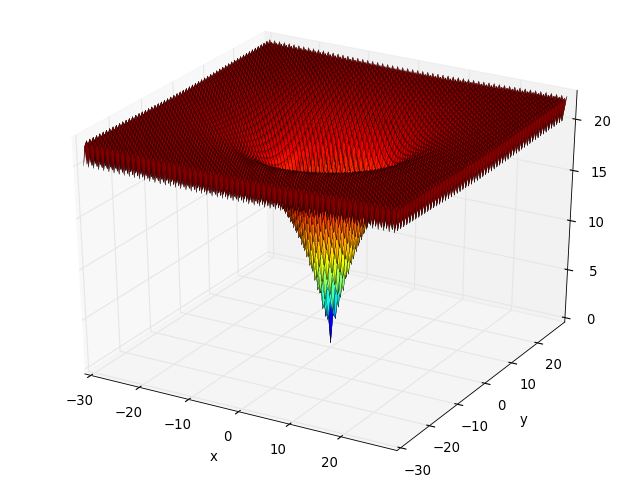
- deap.benchmarks.bohachevsky(individual)¶
Bohachevsky test objective function

(Source code, png, hires.png, pdf)
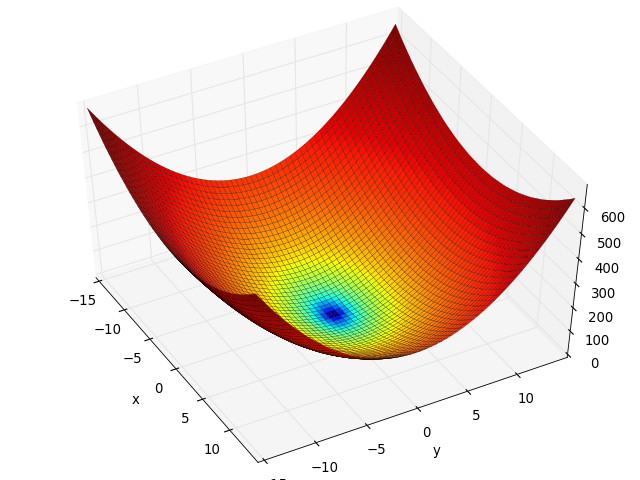
- deap.benchmarks.cigar(individual)¶
Cigar test objective function.

- deap.benchmarks.griewank(individual)¶
Griewank test objective function

(Source code, png, hires.png, pdf)
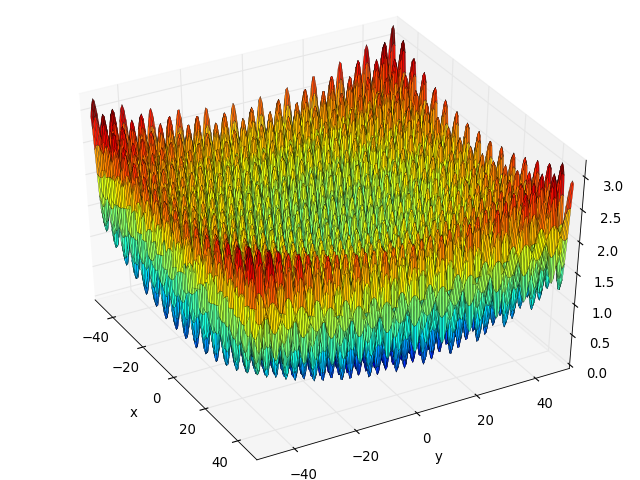
- deap.benchmarks.h1(individual)¶
Simple two-dimensional function containing several local maxima, H1 has a unique maximum value of 2.0 at the point (8.6998, 6.7665). From : The Merits of a Parallel Genetic Algorithm in Solving Hard Optimization Problems, A. J. Knoek van Soest and L. J. R. Richard Casius, J. Biomech. Eng. 125, 141 (2003)

(Source code, png, hires.png, pdf)

- deap.benchmarks.himmelblau(individual)¶
The Himmelblau’s function is multimodal with 4 defined minimums in
![[-6, 6]^2](../_images/math/75669c962a0be2922161e8791ed90c7287648594.png) .
.
(Source code, png, hires.png, pdf)
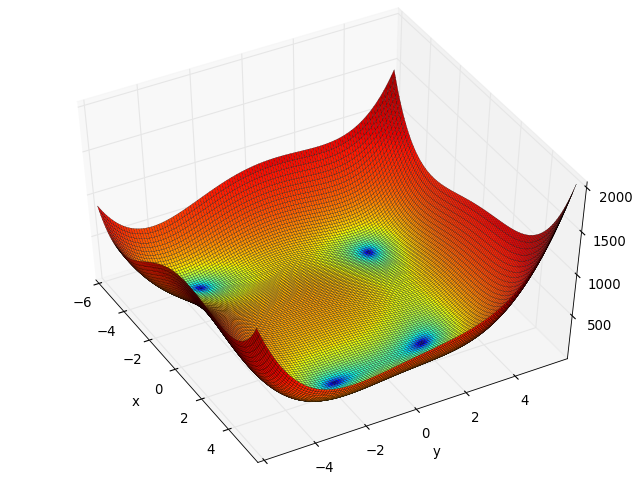
- deap.benchmarks.kursawe(individual)¶
Kursawe multiobjective function.


(Source code, png, hires.png, pdf)
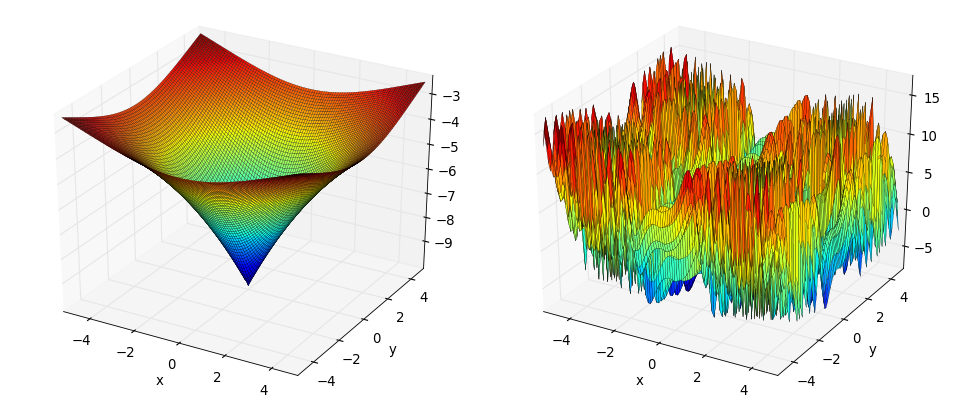
- deap.benchmarks.plane(individual)¶
Plane test objective function.

- deap.benchmarks.rand(individual)¶
Random test objective function.

- deap.benchmarks.rastrigin(individual)¶
Rastrigin test objective function.

(Source code, png, hires.png, pdf)
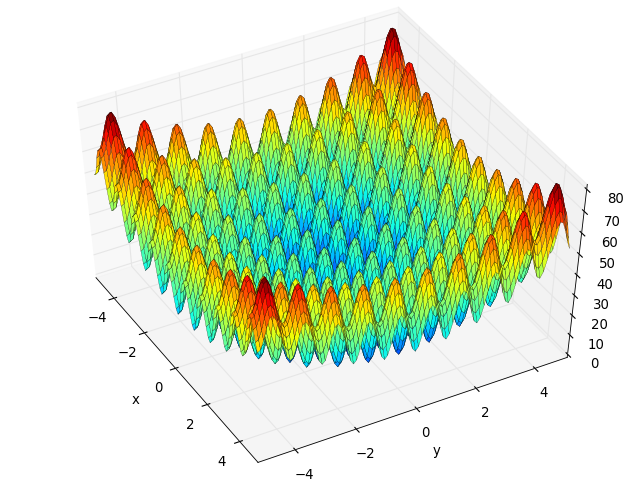
- deap.benchmarks.rastrigin_scaled(individual)¶
Scaled Rastrigin test objective function

- deap.benchmarks.rastrigin_skew(individual)¶
Skewed Rastrigin test objective function


- deap.benchmarks.rosenbrock(individual)¶
Rosenbrock test objective function.

(Source code, png, hires.png, pdf)
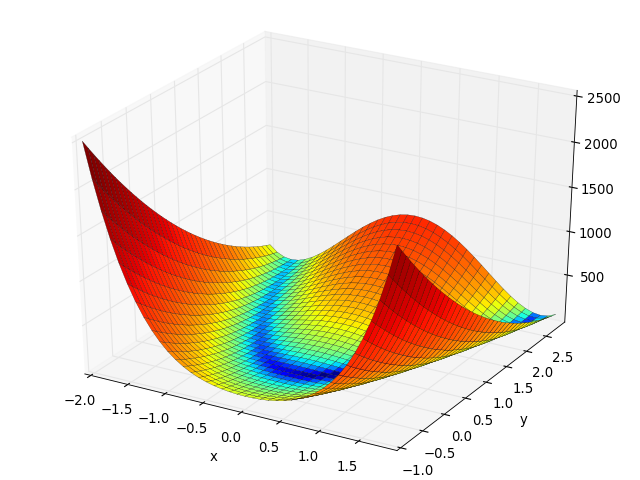
- deap.benchmarks.schaffer(individual)¶
Schaffer test objective function.
![f_{\text{Schaffer}}(\mathbf{x}) = \sum_{i=1}^{N-1} (x_i^2+x_{i+1}^2)^{0.25} \cdot \left[ \sin^2(50\cdot(x_i^2+x_{i+1}^2)^{0.10}) + 1.0 \right]](../_images/math/1fba51e8b265658df16b599400b5865d0538c140.png)
- deap.benchmarks.schwefel(individual)¶
Schwefel test objective function.

(Source code, png, hires.png, pdf)

- deap.benchmarks.shekel(individual, a, c)¶
The Shekel multimodal function can have any number of maxima. The number of maxima is given by the length of any of the arguments a or c, a is a matrix of size
 , where M is the number of maxima
and N the number of dimensions and c is a
, where M is the number of maxima
and N the number of dimensions and c is a  vector.
The matrix
vector.
The matrix  can be seen as the position of the maxima
and the vector
can be seen as the position of the maxima
and the vector  , the width of the maxima.
, the width of the maxima.
The following figure uses
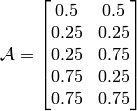 and
and
 , thus defining 5 maximums in
, thus defining 5 maximums in
 .
.(Source code, png, hires.png, pdf)
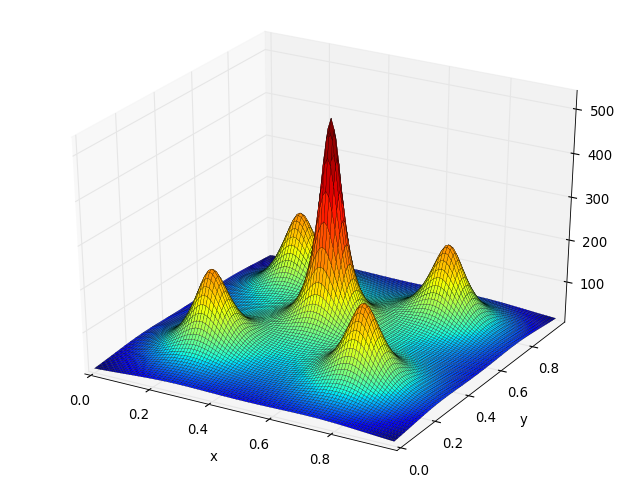
- deap.benchmarks.sphere(individual)¶
Sphere test objective function.
